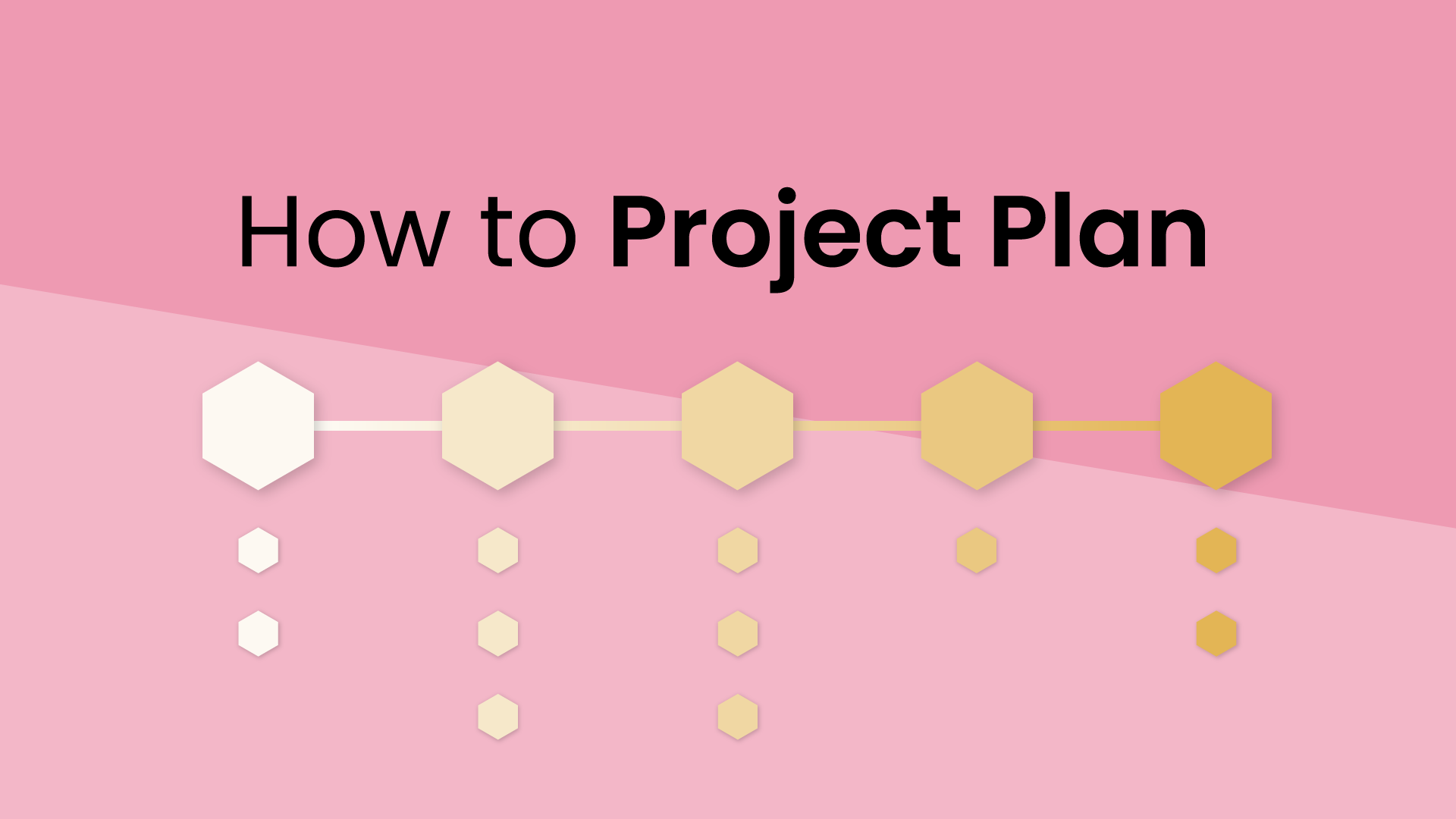

Business meetings have a bit of a bad reputation. They can be long, boring, and often feel like a waste of time. But here's the thing: when done right, meetings are an indispensable tool for collaboration and decision-making to drive your business forward.
This comprehensive guide can help you transform your meetings from dreaded time-sucks into productive powerhouses. Whether you're a seasoned manager or a new professional, check out these actionable tips, strategies, and insights to have successful business meetings that actually get results.
What is a business meeting?
A business meeting is a gathering of two or more people to discuss work-related topics, make decisions, or collaborate on projects. But it's so much more than just people talking in a room (or on a screen).
Well-structured and productive business meetings can help your team unlock its full potential. Here's what you can expect from a good business meeting:
- Communication: Sharing information, updates, and ideas among team members or stakeholders.
- Collaboration: Working together to solve problems, develop strategies, or brainstorm innovative solutions.
- Decision-making: Evaluating options, weighing pros and cons, and reaching consensus on important matters.
- Planning: Setting goals, outlining action items, and establishing timelines for projects or initiatives.
- Relationship building: Nurturing trust, rapport, and a sense of shared purpose among team members.
While meetings can take various forms, they all share a common goal: to move the needle on your business objectives. Whether it's a quick daily huddle, a weekly team meeting, or an annual strategic planning session, each gathering should play a role in driving your company's success.
Types of business meetings
Think all business meetings are the same? Think again. A whole spectrum of formats is out there, each designed to tackle different challenges. Let's explore some of the most common types for internal and external business meetings:
- Status update meeting: These regular check-ins keep everyone informed about project progress, identify roadblocks, and keep everyone aligned.
- Decision-making meeting: These meetings are focused on evaluating options and reaching a consensus on a particular issue or course of action.
- Problem-solving meeting: When challenges arise, these collaborative sessions bring together diverse perspectives to brainstorm solutions and develop action plans.
- Brainstorming meeting: Designed to spark creativity and innovation, these meetings encourage free-flowing ideas and out-of-the-box thinking.
- Team-building meeting: Team-building meetings focus on strengthening personal relationships, improving communication, and boosting morale among team members.
- Strategic planning meeting: These high-level meetings focus on long-term goals, vision, and direction for the organization.
- One-on-one meeting: These one-on-one conversations between a manager and an individual employee provide an opportunity for feedback, coaching, and career development discussions.
- Kick-off meeting: These meetings set the stage for new projects or initiatives, clarifying goals, roles, and expectations.
- Customer meeting: These meetings focus on understanding customer needs, addressing concerns, and building strong relationships.
- Sales meeting: These meetings are designed to showcase products or services to potential customers, address their needs and concerns, and ultimately close a deal. Carrying a digital business card in such meetings offers a convenient way to share your contact information and provide instant access to key resources, enhancing your sales interactions.
- Board meeting: These are a specific type of meetings held by a company's board of directors who typically manage sensitive information and require the use of board meeting software for better governance.
- Partner meeting: These meetings bring together companies to discuss potential collaborations, partnerships, or joint ventures.
- Investor meeting: These meetings are held to update investors on a company's financial performance, discuss future plans, and answer questions.
How to conduct effective business meetings
Now that we've gotten the basics out of the way, how do you actually conduct a successful business meeting? What's the secret?
Follow this step-by-step guide to transform your business meetings into dynamic powerhouses of collaboration and innovation.
1. Define a clear purpose & desired outcomes
Before you even consider scheduling a meeting, take a moment for thoughtful reflection. Ask yourself these questions:
- Why are we meeting?
- What specific problem are we trying to solve?
- What decisions do we need to make?
- What goal(s) are we working towards?
- What do we want to achieve by the end of this meeting?
- Are we looking for a concrete decision?
- Do we need a well-defined plan of action?
- Or is our primary goal to ensure a shared understanding of the issue at hand?
Clearly articulating the purpose and desired outcomes of the meeting serves as the foundation for everything that follows. It will:
- Guide your agenda: The purpose and outcomes shape the structure and flow of the meeting.
- Keep the discussion focused: Participants will understand the objectives and stay on track.
- Guarantee efficient use of time: Everyone's time is valuable, and a focused meeting respects that.
- Measure success: After the meeting, you can assess whether the desired outcomes were achieved.
2. Craft a well-structured agenda
Your meeting agenda is the GPS for your meeting – it provides clear directions, describes the meeting objectives, and keeps everyone on the right path. Think of it as a detailed roadmap that outlines:
- Topics: What specific subjects will be addressed? List them in a logical order that builds upon each other.
- Time allocation: How much time will be devoted to each topic? Be realistic and allow for flexibility.
- Responsibility: Who will lead the discussion or presentation for each item? Assign roles to ensure smooth transitions and accountability.
- Desired outcomes: Briefly reiterate the desired outcome for each agenda item to keep everyone focused on the overall goals.
Sharing the agenda:
Distribute the agenda to all participants well in advance of the meeting. This allows them to:
- Prepare: They can review relevant materials, gather their thoughts, and formulate questions or ideas.
- Prioritize: If the agenda is packed, attendees can identify which topics are most critical for their participation.
- Contribute: Having a clear agenda empowers participants to contribute more meaningfully to the discussion.
Example meeting agenda structure:
3. Invite the right people
Sending a meeting invitation to the right people is a balancing act. You want to guarantee that all critical perspectives are represented, but you must also avoid overcrowding the room with unnecessary attendees.
- Critical participants: These are individuals whose presence is necessary for achieving the meeting's objectives. They may have decision-making authority, possess key information or expertise, or be directly responsible for the outcomes.
- Optional participants: These are the meeting participants who may benefit from attending or have valuable input, but whose absence won't hinder the meeting's progress. Consider inviting them if time allows and their insights are relevant.
- Informational updates: For those who don't need to attend but would benefit from knowing the outcomes, think about just sending a summary email or scheduling a follow-up briefing so everyone can be informed without bogging down the meeting.
Questions to consider:
- Who has the authority to make decisions related to the meeting's purpose?
- Who possesses the knowledge or skills necessary to address the topics on the agenda?
- Who will be directly impacted by the decisions or outcomes of the meeting?
- Who can provide unique perspectives or insights that will enrich the discussion?
4. Start & end on time
Time is a precious resource, and if you want to build trust and maintain the productivity of the meeting, you'll need to respect everyone's time.
Starting on time:
- Set the tone: Starting the meeting when it's actually scheduled demonstrates your commitment to efficiency and respect for everyone's schedules. It also sets the expectation that the meeting will be well-managed and focused.
- Don't penalize punctuality: If a few attendees are running late, don't delay the meeting time for them. This rewards tardiness and penalizes those who arrive on time.
- Brief recap: For latecomers, provide a quick summary of what they missed after the meeting or in a follow-up email.
Sticking to the agenda
- Timekeeper: Assign someone the role of timekeeper to help keep the meeting on track. They can provide gentle reminders when a discussion is running long and suggest moving on to the next topic if necessary.
- Flexibility: While any efficient meeting will stick to the agenda, allow for some flexibility. If a particular topic sparks valuable discussion that exceeds its allotted time, consider briefly adjusting the schedule to accommodate it.
- Summarize & move on: If a discussion veers off-topic or gets bogged down in details, summarize the key points and suggest revisiting the issue later if necessary.
Ending on time:
- Respectful conclusion: Aim to end the meeting on time or even a few minutes early. This shows respect for everyone's schedules and allows them to transition smoothly to their next tasks.
- Summarize key takeaways: Before adjourning, briefly recap the main decisions, action items, and next steps. That way, everyone is on the same page and knows what's expected of them.
5. Assign roles
To make sure your meeting doesn't go off the rails, it's key to have a clear game plan for who's doing what. That means having someone to keep things running smoothly and someone to take notes so nothing gets lost in the shuffle.
Two necessary roles to assign are:
- Facilitator: This is typically the person who called the meeting or the individual most knowledgeable about the topic. Their responsibilities include:
- Guiding the discussion: Keeping the conversation focused on the agenda and ensuring it progresses smoothly.
- Time management: Keeping an eye on the clock and ensuring each topic receives appropriate attention.
- Participation management: Encouraging participation from everyone and ensuring that no one dominates the conversation.
- Conflict resolution: Addressing any disagreements or misunderstandings that may arise constructively.
- Summarizing key points: Briefly recap the main points of discussion at the end of each agenda item.
- Notetaker: This person is responsible for documenting the meeting's proceedings. Their duties include:
- Capturing key points: Recording important discussions, decisions, and action items.
- Organizing information: Structuring notes in a clear and concise format for easy reference.
- Distributing minutes: Sharing the meeting minutes with all participants promptly.
- Follow-up: Tracking action items and ensuring they are assigned to the appropriate individuals.
6. Encourage participation
A truly effective meeting is a collaborative effort where every voice is heard and valued. To achieve this, strive for an environment where everyone feels comfortable and empowered to contribute.
Creating an inclusive atmosphere:
- Set ground rules: At the beginning of the meeting, establish ground rules that encourage respect, open-mindedness, and constructive feedback. Emphasize that everyone's opinions are valuable and that there are no "dumb" questions or ideas.
- Active listening: As the facilitator, demonstrate active listening by making eye contact, nodding your head, and paraphrasing what you hear. This shows participants that you're genuinely interested in their input and creates a safe space for sharing.
- Positive reinforcement: Acknowledge and appreciate contributions, even if they don't align with your own views. A simple "thank you for sharing" or "that's an interesting perspective" can go a long way in boosting confidence and encouraging further participation.
- Round robin: Consider using a "round robin" format where each participant has a designated time to share their thoughts on a specific topic. This guarantees everyone has an equal opportunity to contribute and prevents certain individuals from dominating the conversation.
Addressing participation imbalances:
- Direct engagement: If you notice someone hasn't spoken up, gently invite them to share their thoughts. You could say something like, "John, we haven't heard from you yet. Do you have any insights on this topic?"
- Open-ended questions: Ask open-ended questions that require more than a simple "yes" or "no" answer. This encourages deeper thinking and more elaborate responses.
- Gentle redirection: If someone tends to dominate the conversation, politely acknowledge their contribution and then redirect the discussion to others by saying, "Thank you for sharing, Sarah. Now, let's hear from some other voices."
7. Summarize key points & action items
Before everyone runs out the door, take a few minutes to go over what you've accomplished. A quick recap of the main points, decisions made, and who's doing what next will help make sure everyone is all on the same page and that things actually get done.
Summarizing key points:
- Highlight main discussions: Briefly reiterate the most important topics discussed during the meeting. This helps reinforce understanding and ensures that everyone is on the same page regarding the overall context.
- Recap decisions: Clearly state any decisions that were made during the meeting. If there were multiple options considered, highlight the chosen course of action and the reasons behind it.
- Identify key takeaways: Concisely summarize the main lessons learned or insights gained from the discussions. This helps participants distill the most valuable information from the meeting.
Action items:
- Clearly define: For each action item, specify the following:
- Task: What needs to be done?
- Owner: Who is responsible for completing the task?
- Deadline: When should the task be completed?
- Resources: Are there any specific resources or support needed to accomplish the task?
- Review & confirm: Review all action items with the group to ensure accuracy and agreement. This is an opportunity for participants to ask clarifying questions or offer additional support.
- Document & distribute: The notetaker should document all action items in the meeting minutes and distribute them to all participants as soon as possible.
8. Follow up
Just because the meeting's over doesn't mean the work is done. To make sure all that brainstorming and decision-making actually leads to something real, you need to keep the ball rolling and track your progress.
Post-meeting follow-up:
- Timely email: Within 24 hours of the meeting, send a follow-up email to all participants. This email should include:
- Summary of key points: Briefly recap the main topics discussed and decisions made.
- Action items: Clearly list all action items, including the task, owner, deadline, and any necessary resources.
- Next steps: Outline the next steps in the process and any upcoming deadlines.
- Additional resources: If relevant, include links to documents, presentations, or other resources that were discussed during the meeting.
- Open invitation: Encourage participants to ask any clarifying questions or offer additional feedback.
Smart scheduling for business meetings
Frustrated with the endless email chains trying to schedule meetings and constant rescheduling throughout the week? Check out AI tools like Smart Meetings to automatically find the best time for everyone that needs to be there. This AI-powered tool effortlessly schedules and reschedules meetings, prioritizes your most important commitments, and even uncovers hidden pockets of availability in your calendar. With Smart Meetings handling the logistics, you can focus your energy on leading effective meetings, not scheduling them.
Productivity Trends Reports
AI calendar for
work & life
Auto-schedule focus time, meetings, & breaks.
Create your free account →CONNECT YOUR CALENDAR






















.png)
.png)








